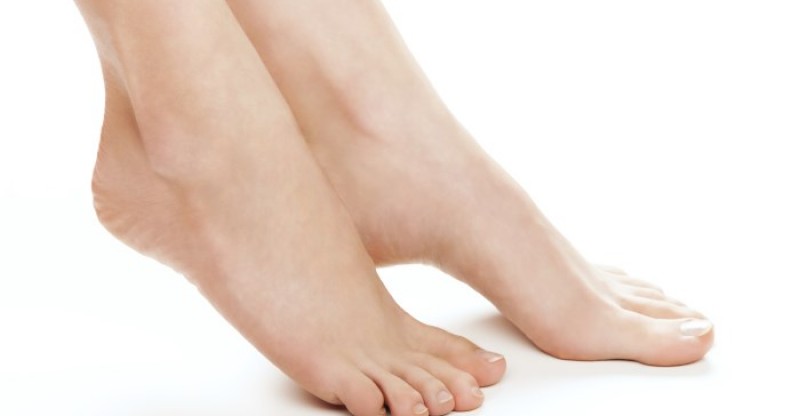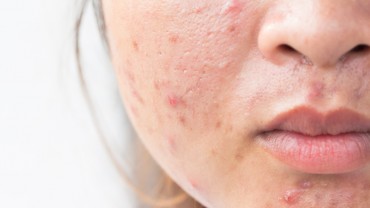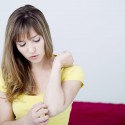How to Get Rid of Corns (11 Proven Remedies)
Look at your feet.
You may be noticing slightly hard pieces of skin that are usually thicker in size.
These are called corns, and they develop by walking around in poorly made or poorly fitting shoes.
But what is a corn on your foot exactly?
They usually appear on the sides and tops of toes, in between in your toes, and especially on the soles of your feet.
But it doesn’t stop there, corns can also grow off of different body parts such as your elbows or shins.
Corns develop over time by wearing shoes that are too tight, made out of a poor material that may cause chafing, and high heels.
Some basic activities that can cause corns to exist are running and exercising since they put certain amounts of pressure on your feet.
Most people who suffer from bunions, scars or warts or unhealthy sweat glands are much more prone to get corns than most.
Also, people with poor blood flow such as diabetes patient can get corns, but most times can be easily treated by a doctor specializing in feet.
Take one last look at your feet.
These corns that you may be seeing are painful to deal with on a day to day basis.
They have basic symptoms which include pain while standing on both feet or general walking.
Luckily, there are plenty of lotions and antibiotics to take to help treat this foot condition.
What’s even better is our guide below for the top 11 at home remedies to try to get rid of your corns.
These home remedies usually have half the side effects of the over-the-counter medicine and are easily at your disposal.
Lemon
The most common type of home remedy for a corn on foot is lemon juice.
Lemons contain citric acid and can break down the hardened skin so the corn can fall out and new smoother skin can replace it.
How to use:
- Spread lemon juice over the corn and air dry at least three times a day.
- You can also soak two cloves in lemon juice and spread the juice on your corns, allow to air dry and repeat as much as you would like daily.
- Alternatively, you can also mix at least one teaspoon of Brewer’s yeast with lemon juice to create a paste that can spread over your corns. Cover with a gauze or bandage and remove after 24 hours.
Papaya
Another great way to remove corns is with papaya.
More than just food, it contains enzymes which help break off dead skin, including your annoying corns.
Try using raw papaya since this will also provide a nice painkiller to soothe any discomfort corns may create.
How to use:
- Drain a papaya into a bowl.
- Allow a cotton ball to soak in the juice, place it on any corn on your feet and either wrap an ace bandage around it or tape it.
- Remove it after 24 hours and exfoliate the skin with a pumice stone.
- Feel free to repeat until the corns are 100% gone.
Pumice Stone
A Pumice stone is a proven effective remedy and goes hand in hand with many other home remedies as well.
It works by removing the dead, hard skin while speeding up the time it takes to recover from this condition at half the pain.
How to use:
- Preferably at night, soak the affected feet in warm water for at least ten minutes to soften the skin.
- Rub the stone against the corns for five to ten minutes and then dry completely dry off your feet.
- Soak a cotton ball in castor oil, secure it to the corn with tape and take off in the morning.
- In the morning, remove the cotton ball and apply castor oil as needed until the corns are gone.
Baking Soda
An exfoliating agent that be used to help remove dead skin which will result in a corn is baking soda.
This method is as simple as it gets since most families carry this simple ingredient.
Luckily, baking soda has antibacterial and antifungal properties that will not only remove the corn but will keep your foot clean from infections.
How to use:
- Combine three tablespoons of baking soda to a cup of warm water and let your feet soak for about ten to fifteen minutes. After, use a pumice stone to remove the remaining dead skin.
- Alternatively, you can mix baking soda, lemon juice, and water together and spread over the corns. Cover with gauze or a band-aid, remove within 24 hours, rinse with warm water, and use a pumice stone to shed the dead skin.
- Use one or both methods for as long as you need until all the corns on your feet are gone.
Garlic
Garlic is the key to helping get rid of corns due to its natural antioxidant properties.
Not to mention, its antifungal and antibacterial properties to help prevent infections as well.
How to use:
- Slowly rub half of a garlic clove on the dead skin or corn on your feet. Allow your skin to dry and place a bandage to protect it. Within 24 hours, remove the bandage, wet with warm water and continue until the corn is entirely gone.
- Another method is creating a paste from garlic cloves and salt in which you apply the paste, cover with a bandage, and remove within 24 hours. Continue this method until all the corns are gone.
- Alternatively, you can create another type of paste with garlic cloves and vinegar. Dip cotton balls in the paste, secure with tape, and remove within 24 hours. Repeat as much as necessary.
Turmeric
Turmeric has incredible anti-inflammatory properties.
This makes it a good way of how to get rid of corns.
It alleviates all discomfort, reduces pain in the area, and quickens the healing process.
How to use:
- Combine a half of a teaspoon of turmeric with one teaspoon of aloe vera gel.
- Rub the mixture onto the corn.
- Place a bandage on the corn and leave it on overnight.
- In the morning, exfoliate the skin.
- Apply a moisturizer to the affected area.
- Repeat daily until the corn is gone.
White Vinegar
If you have a corn on foot, white vinegar can be an excellent home remedy option.
It is high in acidity, which aids in breaking down and softening hardened skin.
White vinegar also contains antibacterial and antifungal traits that will reduce the chance of infection.
How to use:
- Mix three parts water to one part vinegar.
- Using a cotton ball, dab the mixture onto your corn.
- Cover the area with a bandage and leave it to sit overnight.
- When you wake in the morning, exfoliate the skin using either an emery board or a pumice stone.
- Then, moisturize the area with coconut oil or olive oil.
- Repeat this process daily until the corn is fully removed.
Onions
Onions have wonderful antibacterial traits that make it perfect for treating corns and calluses.
The onion breaks down the hard, dry skin.
It also reduces the risk of infection in this sensitive area.
Additionally, onions can also relieve the discomfort, soreness, and pain associated with foot corns.
How to use:
- Cut a wedge out of an onion.
- Place it in a glass bowl and pour vinegar over it.
- Keep the bowl in a warm, room temperature environment all day long.
- Before bed, place the slice of onion on your corn.
- Secure it with a bandage and leave it on overnight.
- Repeat this process every night until your corn is no longer a problem.
Turpentine Oil
A powerful antiseptic, turpentine oil is a proven method of how to get rid of corns on toes.
This is also one of the fastest ways to treat corns, as the oil penetrates the skin rather quickly.
How to use:
- Melt one-quarter cup of extra virgin coconut oil in your microwave.
- Add a tablespoon of turpentine oil and two tablespoons of camphor oil.
- Mix them together and allow the mixture to cool.
- While waiting for it to cool down, soak your feet in warm water for a couple of minutes.
- Dry them gently.
- Apply the cream mixture to your corn.
- Store the remainder of the cream in an airtight container.
- Apply the cream two or three times a day until you notice a difference.
Licorice
Licorice was used in traditional ancient Indian medicine as a way how to get rid of corns.
This is mainly due to its incredible medicinal and healing traits.
How to use:
- Mix together one tablespoon of licorice powder with mustard oil until it creates a thick paste.
- Apply the mixture to your corn.
- Wrap a bandage around it and let it be overnight.
- In the morning, remove the bandage and wash the area thoroughly with warm water.
- Repeat this process every night until your corn is gone.
Pineapple
Pineapple peels are an excellent way to remove a corn on foot.
The peels contain special enzymes that the flesh of the pineapple does not.
This enzyme helps to soften corns and relieve some of the pain.
How to use:
- Peel a pineapple.
- Cut a small piece of the pineapple peel, just big enough to cover the corn.
- Place the inside on the peel over the corn and wrap a bandage around it.
- Put a sock over the bandage.
- Let it soak in overnight.
- When you wake up, remove the sock, bandage, and pineapple.
- Wash the region and apply coconut oil.
- Repeat nightly for a week or until the corn comes out.
Bonus Tips
- Keep your toenails trimmed nice and short to remove pressure from your toes.
- Wear shoes that fit properly and comfortably; get extra cushioning if you need it.
- Do not walk around barefoot and do not wear flip flops.
- Wash your hands and feet every night with warm water and soap.
- Moisturize dry corns with olive oil, cocoa butter, or coconut oil to soften them up.
- Cutting or shaving corns yourself can cause infection.
- An Epsom salt bath can relieve some of the sharp pain associated with corns.
- Use protective pads to cover corns; this will alleviate some of the pressure on the skin and decrease friction.
Conclusion
Getting rid of corns on toes is simple with these natural home remedies.
However, if you are experiencing a lot of pain or you have an underlying medical condition like diabetes, speak to your doctor before treating corns by yourself.
FDA Compliance
The information on this website has not been evaluated by the Food & Drug Administration or any other medical body. We do not aim to diagnose, treat, cure or prevent any illness or disease. Information is shared for educational purposes only. You must consult your doctor before acting on any content on this website, especially if you are pregnant, nursing, taking medication, or have a medical condition.
HOW WOULD YOU RATE THIS ARTICLE?







